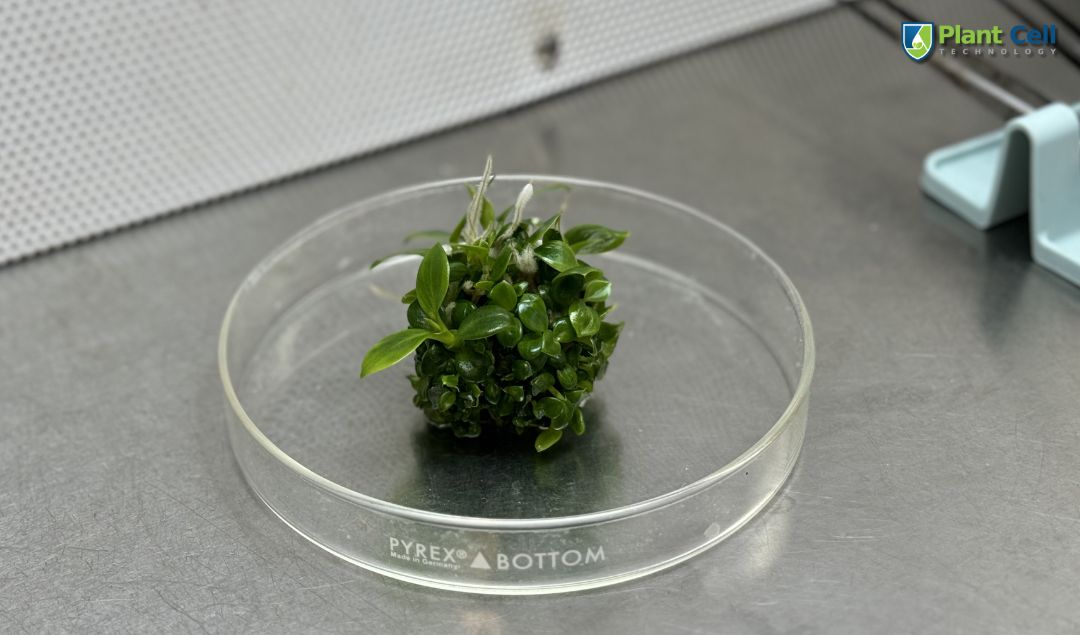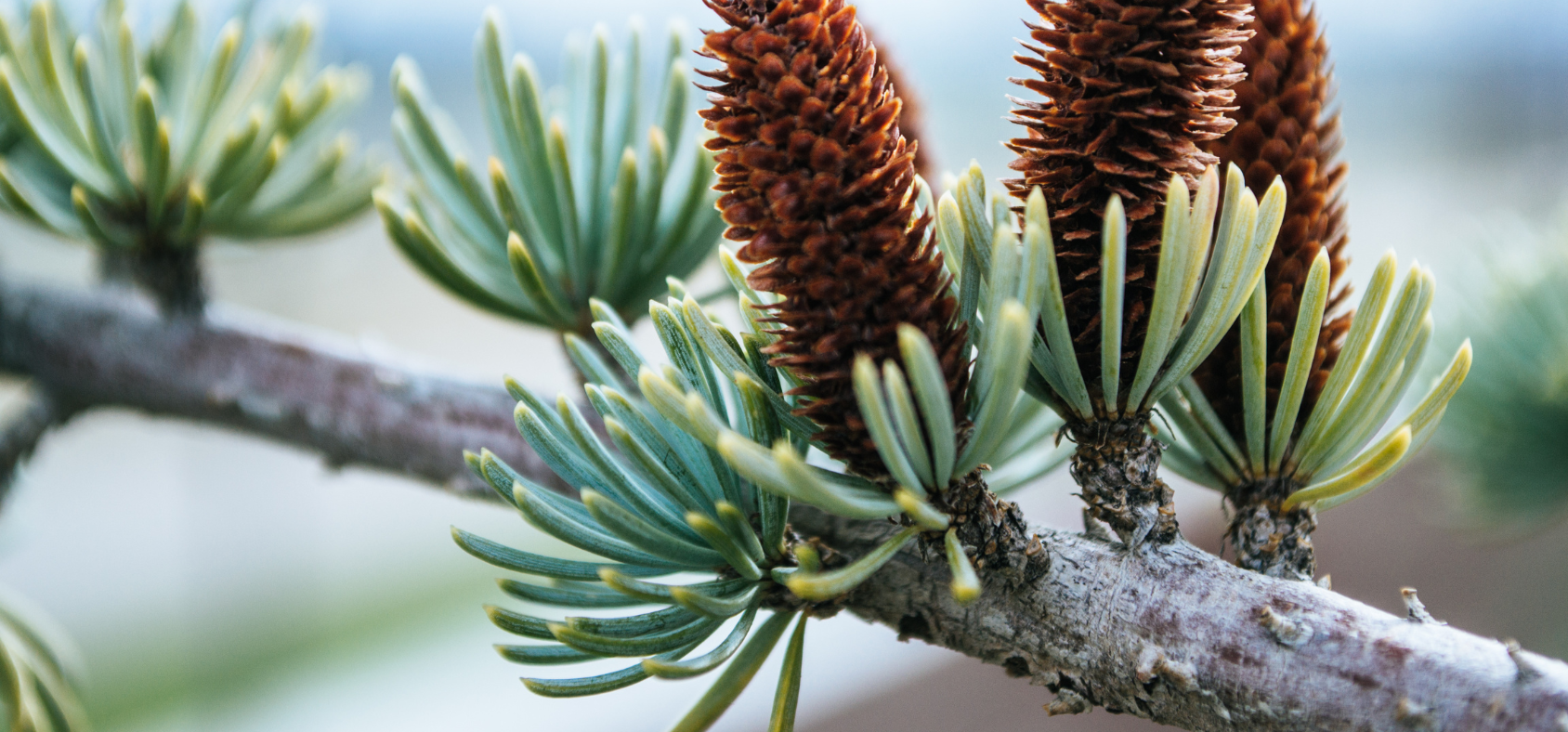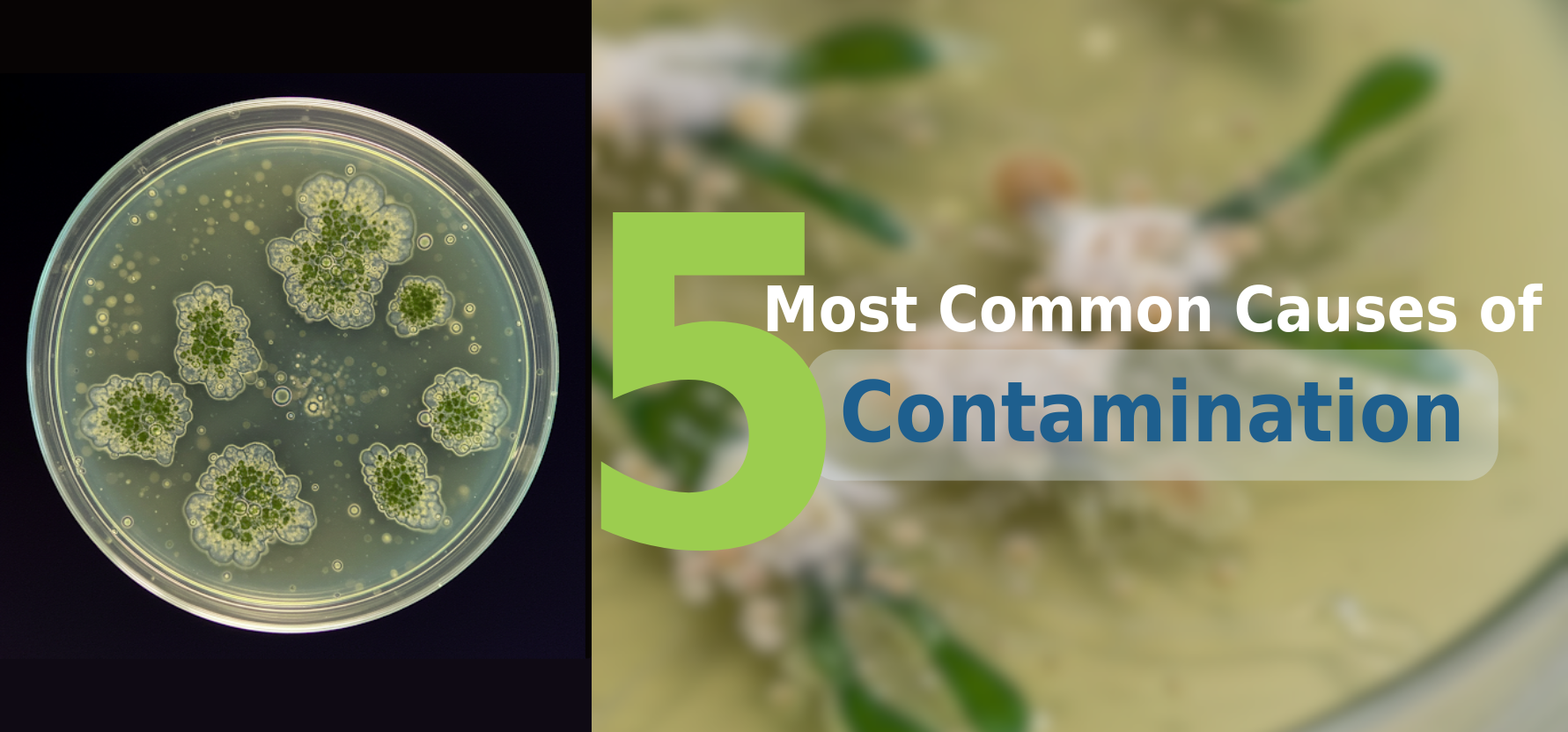
How To Use The Plant Tissue Culture Technology
As a content and community manager, I leverage my expertise in plant biotechnology, passion for tissue culture, and writing skills to create compelling articles, simplifying intricate scientific concepts, and address your inquiries. As a dedicated science communicator, I strive to spark curiosity and foster a love for science in my audience.


Introduction
Gone are the days when growers had only the traditional means of growing plants. Waiting for a suitable season and then waiting for months to see your single plant grow was such a pain. Cutting, layering, seeds, and grafting have been efficient approaches to growing and multiplying plants, but they weren’t enough to scale the plant business; to meet market demands.
Then tissue culture came into the picture...
You must know that it’s one of the most advanced techniques available today for propagating plants. The most exciting thing about the technology was to grow a whole plant just by using a few tissues. Soon, it started to be seen as a magical approach for businesses to fulfill market needs.
The only catch with the technology back then was the availability of a perfect recipe or protocol to grow particular plants however, soon after many researchers and growers started using the technology to grow various plant species, including many ornamental plants, such as orchids; horticulture plants, such as tomatoes, potatoes, bananas, pineapples, and many others.
The accessibility of plant tissue culture-related information grew and made its way to the majority of plant businesses. Now you must know that today it’s exponentially catching hobbyists and beginners' interest in growing plants using the technology.
Now, many people try it for fun!
Before exploring the applications of tissue culture, and why one should use the technique, let’s take a few steps back to learn about the method of tissue culture and how does it work.

What Is Plant Tissue Culture?
Simply put, plant tissue culture is a process of growing plants in a tiny jar in a completely controlled environment. You take a piece from your desired plant and introduce it to a nutrient media that supplies all the nutrients and minerals a plant needs for its growth and development.
In addition to nutrients, you also need to make sure that you maintain a clean and aseptic environment. This is especially necessary because your plant is not ready to fight pathogens on its own and you need to give it proper time for its easy development in the controlled environment.
What does a controlled environment mean?
It means an environment with a pre-set suitable temperature, humidity, and light conditions that the plant prefers to properly grow.
Another question, you may have is: how come a few tissues of the plant can give rise to a whole plant?
The answer to the question is the totipotency of plant cells, which is the ability of plant cells to give rise to a whole new plant. Plant cells can divide and replicate, producing new cells with the same genetic information and characteristics as the original cell. All this without the need for fertilization. This also answers why plants can be produced using asexual methods as well.
The concept of totipotency was first introduced by Haberlandt in 1902 when he proposed that plants' somatic cells can give rise to an entire plant.

Applications of Plant Tissue Culture
Earlier, the tissue culture technique was only limited to the walls of a typical scientific laboratory for basic research to study plant growth, cell division, and biochemistry. However, over the years, with the advancement in technology, the technique has been widely implemented on a more applied scale; in many small to large-scale plant businesses.
Starting with the orchid, the tissue culture technique has now spread its root to the propagation of various other plants including, bananas, pineapple, potatoes, tomatoes, Philodendrons, Monsteras, and Succulents, and there’s a massive list of all different varieties of plants.
Areas that find the vast applications of the tissue culture technology include:
Commercial Plant Production
Beyond research, tissue culture techniques unlock significant commercial potential for large-scale, controlled production of valuable ornamental, vegetable, and fruit plants, impacting industries across the board.
Beyond simply multiplying plants, plant tissue culture offers a powerful tool for agricultural improvement, tackling major crop challenges posed by constant threats of biotic and abiotic stresses. These threats, including pests, diseases, and harsh environments, often lead to reduced yields and threaten food security.
By cultivating plant cells and tissues in controlled laboratory environments, researchers unlock unique capabilities:
- Breeding disease-resistant and stress-tolerant crops: Through selective breeding of plant cells with desirable traits, scientists can create hardier cultivars resistant to diseases and able to withstand environmental challenges like drought or salinity.
- Preserving valuable genetic diversity: Techniques like embryo rescue allows the recovery of plants infected with viruses or other pathogens, safeguarding valuable genetic material for future breeding programs.
- Manipulating genes for enhanced resilience: By manipulating genes responsible for stress tolerance, researchers can develop crops that thrive in harsh conditions, adapting to a changing environment and contributing to sustainable agricultural practices.
This approach, often integrated with other biotechnological strategies, contributes to sustainable agriculture by ensuring increased food productivity and safety.

Genetic Engineering
Recent leaps in genetic engineering have empowered tissue culture research, offering a deeper understanding of plants at the molecular level. These tools act like powerful microscopes, revealing how genes influence growth, resistance, and hidden variations within plant cells and tissues.
This knowledge unlocks exciting possibilities: we can breed hardier, disease-resistant crops, assist in the rapid and secure propagation of endangered species, and even develop new plant varieties with unique traits like extended shelf life or vibrant colors. This synergy between genetic engineering and tissue culture paints a future beyond miniature jars, signifying a new chapter in plant science with immense potential to benefit all.
Research studies
Techniques like transgenesis, somatic hybridization, and metabolic engineering allow researchers to delve deeper into the plant world.
These sophisticated tools offer remarkable potential:
- Enhanced crops: Imagine disease-resistant varieties or crops enriched with nutrients, thanks to the targeted manipulation of plant genomes.
- Novel plant combinations: By merging cells from different plants, researchers can create hybrids with unique, desirable traits, leading to exciting possibilities in agriculture and horticulture.
- Plants as factories: Metabolic engineering holds promise for developing plants that can produce valuable biopharmaceuticals or even help clean up polluted environments.
Plant tissue culture offers a versatile tool for exploring and manipulating plant life, offering applications in both fundamental research and conservation. Understanding plant physiology and morphogenesis, the processes governing plant function and form, has long been hampered by the limitations of traditional methods. However, by isolating and cultivating plant tissues in vitro, researchers gain unprecedented control over the environment and can observe specific developmental processes with remarkable detail.
This "controlled microscope" approach allows for in-depth studies of hormone signaling, stress responses, and even the effects of genetic modifications, ultimately leading to the development of improved crops with enhanced stress tolerance and efficient growth strategies.
Exploring and refining these diverse applications offers significant benefits for agriculture, environmental sustainability, and the development of innovative plant-based products. Plant tissue culture has evolved beyond its initial purpose, becoming a versatile tool shaping the future of plant science.

Plant Species Conservation
The escalating threats to plant biodiversity necessitate innovative conservation techniques. Plant tissue culture emerges as a powerful tool for ex-situ conservation, the preservation of genetic diversity outside natural habitats.
By multiplying and storing plant germplasm in controlled, sterile environments, we can establish "living libraries" of endangered species. This germplasm serves as a valuable resource for future reintroduction programs, ensuring the survival of threatened species and safeguarding the invaluable genetic diversity upon which future generations depend. Therefore, plant tissue culture transcends its initial role as a propagation technique, offering a crucial window into the inner workings of plants and serving as a vital weapon in the battle to preserve our planet's botanical heritage.
Secondary Compound Production
Plants, rich in bioactive molecules termed secondary metabolites, have served as a valuable source of natural medicines for centuries. These diverse compounds, with their unique structures and metabolic pathways, hold immense potential for treating diseases and developing pharmaceuticals and nutraceuticals.
Recent advancements in plant cell culture offer a powerful tool for harnessing this potential. By cultivating plant cells and tissues in controlled environments, scientists can replicate the metabolic processes underlying the production of valuable secondary metabolites. This opens exciting possibilities for pharmaceutical production:
- Cost reduction: By bypassing traditional cultivation and extraction methods, tissue culture offers a potentially more cost-effective approach to producing valuable plant-based compounds.
- Faster production: Controlled environments in tissue culture enable rapid multiplication of plant cells and targeted production of specific metabolites, leading to faster production cycles.
- Scalability: Tissue culture systems can be readily scaled up, allowing for large-scale production of pharmaceuticals to meet market demands (Hesami et al., 2017; Espinosa-Leal et al., 2018).
This approach not only taps into the rich diversity of naturally occurring bioactive compounds but also offers greater control over production processes, ensuring consistency and quality. Moreover, it provides a sustainable alternative to traditional methods that may deplete natural resources.

Figure: Applications of the tissue culture technique.
What do You Need To Have to Get Started In Plant Tissue Culture?
You are here because you wanted to know how and where you can use the tissue culture technology. With this, you must know what you need to get started in tissue culture.
A dedicated space:
The first obvious requirement is a space to perform your experiments.
It’s a myth that you need a sophisticated lab setting to perform tissue culture. You can do it in a mere one room of your home, ensuring an aseptic and clean environment.
You'll need a clean and well-organized workspace to minimize the risk of contamination. A spare room, a ventilated cabinet, or even a converted shelf can work, as long as you can maintain sterile conditions.
Essential equipment:
Laminar flow hood: It’s crucial to provide a sterile airflow to protect your cultures from contamination. While expensive, there are budget-friendly options available or you can consider using a still air box as an alternative.
Autoclave or pressure cooker: This is used to sterilize your equipment and media to ensure a contamination-free environment.
Balance: A precise balance is needed for accurately weighing small amounts of media and other chemicals.
Scalpel and forceps: These are essential for handling plant tissues under sterile conditions.
Culture vessels: Petri dishes, test tubes, or flasks can be used to house your plant cultures. Choose vessels based on the type of plant and the technique you're using.
pH meter: This helps you monitor and adjust the pH of your culture media, which is crucial for plant growth.
Chemicals:
Plant growth media: There are different types of media available, each formulated for specific plant species or requirements.
Agar: Agar is a gelling agent that solidifies the media and provides support for the plant tissues.
Plant hormones: Plant hormones can be used to stimulate growth, differentiation, and regeneration in plant tissues.
Distilled water: Use sterile, distilled water to prepare your media and avoid contamination.
Bleach and alcohol: These are used for sterilizing surfaces and equipment.
Labels: Clearly label your cultures with the plant species, date, and any other relevant information.
A majority of these items you can purchase in the Plant Cell Technology store.
Knowledge and skills
Before diving in, it's crucial to gain a basic understanding of plant physiology, tissue culture techniques, and the specific requirements of the plants you want to propagate. To help you with this, Plant Cell Technology offers a comprehensive tissue culture master class conducted by experts with 10-30+ years of experience. The classes take you from the basics to the advanced tissue culture knowledge and teach you how to efficiently use it for our purposes.
Plant Cell Technology Empowers Cultivators with Advanced Tissue Culture Solutions
At Plant Cell Technology, we're dedicated to simplifying your tissue culture journey.
Our one-stop-shop caters to all your needs, offering a comprehensive array of tissue culture chemicals, equipment, and our flagship product, PPM™, ensuring your cultures remain contamination-free. Beyond products, we offer expert consultations to tackle any challenges you might encounter, providing tailored solutions and direct access to tissue culture experts.

If you are a beginner navigating your way through tissue culture, our comprehensive master classes serve as an excellent resource to educate yourself in the field and kickstart your journey. Our experts cover everything in the class, from basic principles to advanced procedures. Moreover, you get hands-on practice with our instructors to learn the exact execution of experiments and understand the dos and don'ts during the process.
Plant Cell Technology is your one-stop shop for all your tissue culture needs. So, don't wait any longer; explore our products and services here, and feel free to reach out to us at info@plantcelltechnology.com for any queries or concerns.
Blog Categories
View by Level
Popular Blogs

Can We Grow Wood in a Lab? The Future of Tissue Culture in Forestry
Introduction Wood has long been a cornerstone of human civilization—used for shelter, tools, paper, energy, and countless everyday items. However,...
Read More
The 5 Most Common Causes of Contamination in Tissue Culture Labs
Introduction Scaling up your tissue culture production is impossible if you’re constantly battling contamination. Contamination is one of the biggest...
Read MoreSubscribe to Our Newsletter







Join the conversation
Your email address will not be published. Required fields are marked